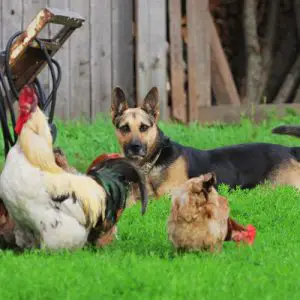Switching dog food is quite common; most dog owners will do this as their pups grow older. However, it’s essential to note that these transitions should be done slowly to allow your dog to adjust gradually.
You may have different reasons for switching your dog’s food including your vet recommending another diet, food sensitivity in your dog, or choosing a pocket-friendly option.
Whatever your reasons are, you can comfortably switch your dog’s food the right way to ensure it stays comfortable and satisfied.
How to Change Your Dog’s Food Gradually
Your dog requires some time to get used to its new diet and warm up to its new foods. This may take close to a week or more as you navigate between the different food options for your dog. So, here’s the best approach to help increase your chances of success.
- Day 1: Start with a mixture of 75% of your dog’s current food and 25% of the dog food you want to introduce. Adding the new foods in small portions will help avoid causing any digestion problems for your dog.
- Day 2: The next day, go with a 60/40 ratio in each serving to observe your dog’s response to its diet changes.
- Day 3: On this day, a 50/50 ratio of the old and new dog food mixture will introduce your dog more to its new diet.
- Day 4: This is where the ratio shifts to favor your dog’s new diet. Give your dog a mixture of 40% of its old food and 60% of its new food.
- Day 5: Continue reducing the old food to 25% and 75% of the new foods to start the full transition to a new diet.
- Day 6: Now you can leave the old diet and fully transition to 100% of your dog’s new diet.
Six to seven days is the common food transition period for most dogs. However, if your pup’s stomach is more sensitive and it suffers from allergies, the transition may take longer. It is not necessarily a one size fits all solution.
You’ll need to ensure that you pay attention to your dog’s behavior and its response to the gradual changes. If you notice issues like vomiting and loss of appetite, consider taking a longer period to transition.
When your dog fully transitions to the new diet but you still experience digestive issues, consider having a telehealth visit with a vet. It will allow you to consult with a professional vet in the comfort of your home to get a better solution for your fur friend.
Symptoms to Watch Out For When Switching Dog Foods
Switching dog foods can cause gastrointestinal upsets that will negatively affect your dog’s health. Watching out for these upsets will help you prolong the transition period or prompt you to consult a vet. Some of these symptoms include;
- Nausea
- Vomiting
- Changes in appetite
- A lot of gas in their stomach
- Itching
- Skin inflammation
- Hair loss
In addition to watching out for these symptoms, also try to monitor your dog’s poop. The quality of your dog’s stool can tell you a lot about its digestive health. Pay attention to the stool’s consistency and color to ensure everything is normal.
In case of any changes, consult with a vet to determine what could be the cause of the changes in your dog’s stool. Dog stool will also help you monitor if your dog is getting enough water to avoid dehydration and constipation.
When to Transition Your Dog to New Foods
Changing your dog’s food can be due to different personal and health reasons. But, there are specific stages where food transitions are necessary to keep your dog healthy. The different stages include;
- When your puppy turns 12 months old, it becomes an adult with different nutritional requirements. So, you’ll need to transition them to adult dog food that is formulated to meet your dog’s needs at that age. Remember to consider whether your dog is a large breed or small breed and choose their adult dog food accurately.
- At the age of 7 years, small and medium size dog breeds should transition to mature or senior dog foods while large-size dog breeds should transition at 5 years of age. These food transitions are necessary to ensure that you are meeting your dog’s nutritional needs.
- When your dog is pregnant or nursing, switch them to puppy food to ensure they are getting foods with more energy and calcium to support them and the puppies during this period.
How to Choose New Dog Food
Food transitions in dogs can be a bit tasking and will require you to invest in the right foods. Choosing the right dog food may ease that transition period and allow you to enhance your dog’s health.
So, when choosing new dog food, consider the different stages we discussed earlier. If your pup is now an adult, keep that in mind and invest in the right food choice. Doing this ensures that you meet your dog’s nutrient needs to support its growth.
In addition, read the dog food labels to ensure the ingredients will support your fur friend’s growth. If your dog is allergic to specific ingredients, it will be easier to eliminate foods that have them in their ingredient list.
Reading your dog’s food labels will also help you get food that is healthier for your dog. You’ll easily avoid additives that may affect your dog’s health over time.
If you are still stuck on the kind of dog food to choose, consult your vet for some suggestions. Your vet will consider your dog’s needs and suggest foods that will help meet them and keep your dog healthy.
Conclusion
There’s a right way to switch dog food and it involves a transition period to help reduce adverse reactions to the food changes. Transitioning gradually helps your dog adjust to its new diet with ease.
But, some complications like vomiting, diarrhea, and lack of appetite may come up and require some adjustments. If these symptoms persist, consult a vet to check on your dog or suggest better food options that your dog will enjoy.



